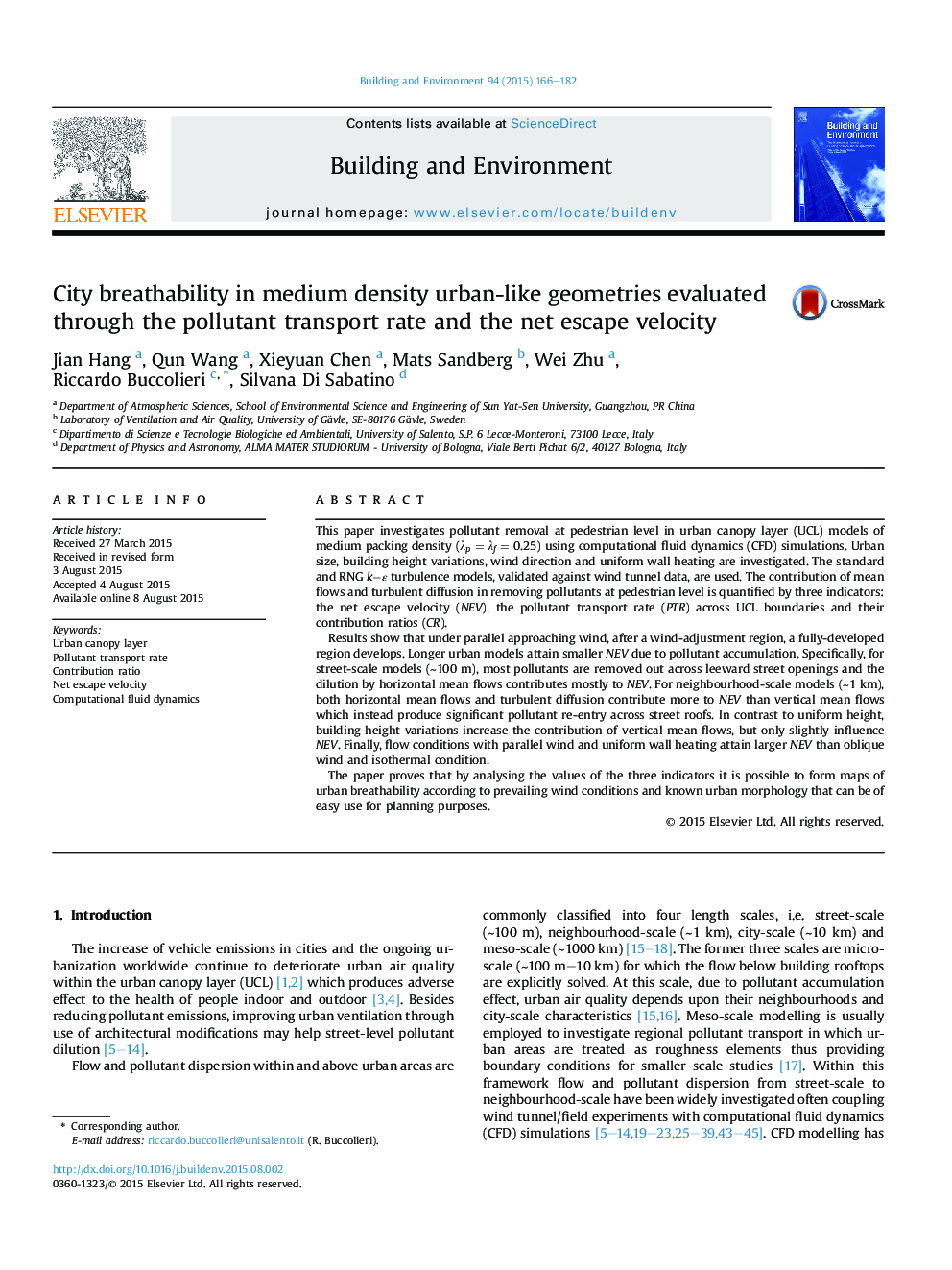| Article ID | Journal | Published Year | Pages | File Type |
|---|---|---|---|---|
| 247803 | Building and Environment | 2015 | 17 Pages |
•Pollutant removal in UCL models of medium building density is studied.•Pollutant transport rate (PTR) and net escape velocity (NEV) are used as ventilation indicators.•NEV is smaller in UCLs with longer streets due to pollutant accumulation effect.•Parallel wind and wall heating get bigger NEV than oblique wind and isothermal case.•Building height variations enhance pollutant removal across street roofs.
This paper investigates pollutant removal at pedestrian level in urban canopy layer (UCL) models of medium packing density (λp = λf = 0.25) using computational fluid dynamics (CFD) simulations. Urban size, building height variations, wind direction and uniform wall heating are investigated. The standard and RNG k−ε turbulence models, validated against wind tunnel data, are used. The contribution of mean flows and turbulent diffusion in removing pollutants at pedestrian level is quantified by three indicators: the net escape velocity (NEV), the pollutant transport rate (PTR) across UCL boundaries and their contribution ratios (CR).Results show that under parallel approaching wind, after a wind-adjustment region, a fully-developed region develops. Longer urban models attain smaller NEV due to pollutant accumulation. Specifically, for street-scale models (∼100 m), most pollutants are removed out across leeward street openings and the dilution by horizontal mean flows contributes mostly to NEV. For neighbourhood-scale models (∼1 km), both horizontal mean flows and turbulent diffusion contribute more to NEV than vertical mean flows which instead produce significant pollutant re-entry across street roofs. In contrast to uniform height, building height variations increase the contribution of vertical mean flows, but only slightly influence NEV. Finally, flow conditions with parallel wind and uniform wall heating attain larger NEV than oblique wind and isothermal condition.The paper proves that by analysing the values of the three indicators it is possible to form maps of urban breathability according to prevailing wind conditions and known urban morphology that can be of easy use for planning purposes.
